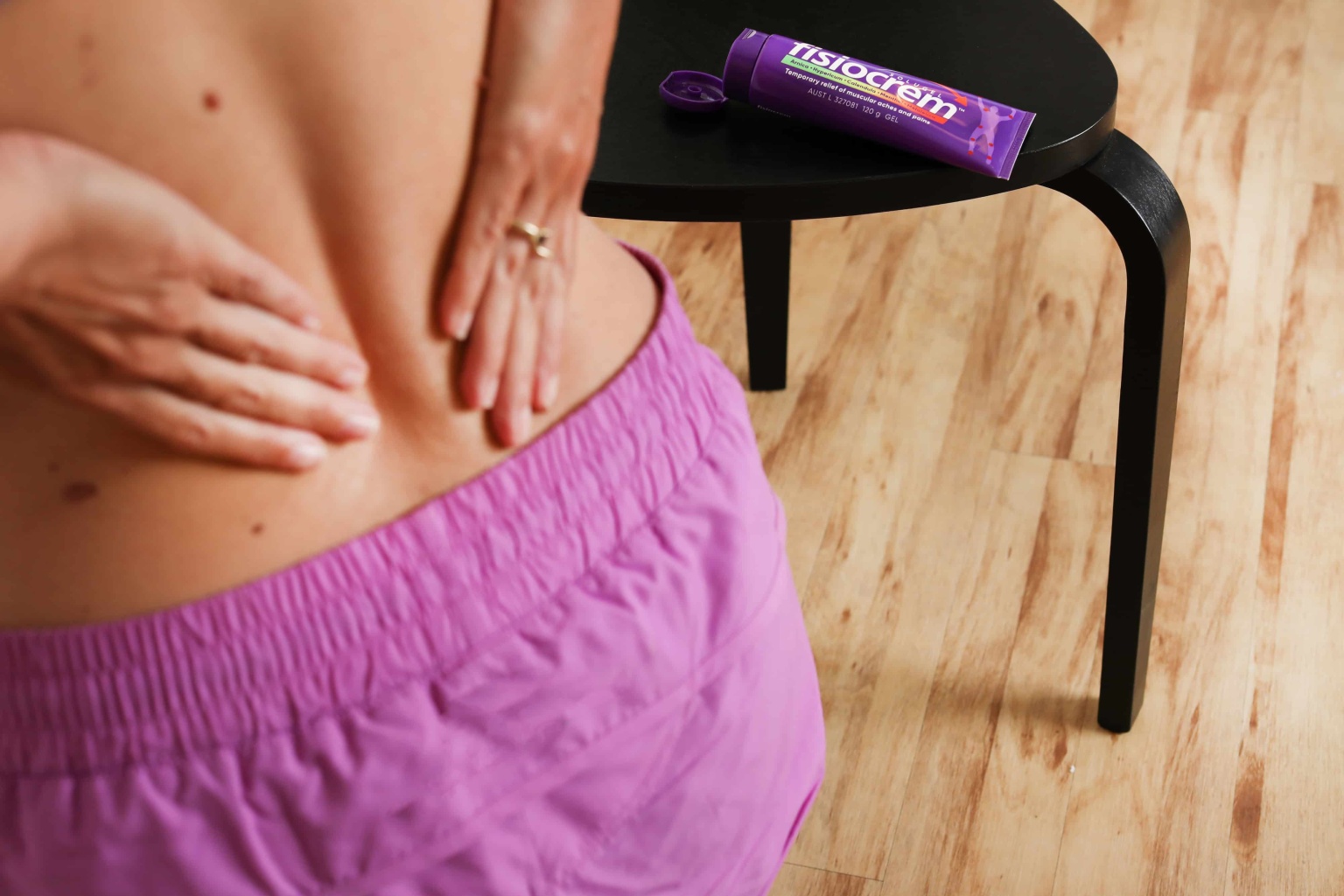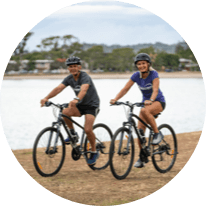Posture has a direct correlation to the comfort, mechanical efficiency, and physical functioning of an individual’s body (Howorth, B. 1946). Good posture is essential for maintaining a healthy musculoskeletal system and preventing discomfort and pain.
You should think of posture as both static positions and the dynamic posture of the body in motion. Static positions include lying, sitting, standing, and various other positions (Howorth, B. 1946).
Occupations that require prolonged static positioning, heavy manual work, shift work, and repetitive sports may all contribute to postural position changes and may result in pain (Britnell, S., Cole, J., Isherwood, L., Sran, M., Burgi, S., Candido, G., Watson, L. 2005).
In today’s lifestyle, many individuals struggle with poor posture, especially when sitting for extended periods. However, there are steps you can take to fix bad posture and alleviate the associated muscle aches and pains. In this article, we will give tips and techniques to improve your posture, especially when sitting down.
Understanding the importance of Good Posture
Before diving into the strategies for fixing bad posture, it’s crucial to understand why it matters. Good posture helps align the body’s musculoskeletal structure, reducing strain on muscles, joints, and ligaments. It enhances balance, promotes optimal breathing, and prevents excessive wear and tear on the body. By prioritising good posture, you can improve overall well-being and reduce the risk of musculoskeletal issues in the long run.
Good posture requires balance, which is necessary when we lie down, ski, walk, etc. When the equilibrium of the body is impaired as a result of exhaustion, mishap, illness, or profession, the effectiveness of the body’s mechanics diminishes (Hansson, K. 2013).

Tips for improving your posture
1. Sleep Posture
Pay attention to your sleeping posture. A good mattress and pillow that support the natural curve of your spine can make a significant difference in your posture and overall comfort. Sleep position is important and can assist in preventing neck and shoulder musculoskeletal pain (Lee, W., & Ko, M. 2017).
2. Stay Hydrated
Proper hydration helps in the preservation of muscular functions which can assist with better posture control (Gauchard, G., Gangloff, P., Voucriot, A., Mallie, J., Perrin, P. 2009).
3. Maintain a Healthy Weight
Excess weight can strain your spine and contribute to poor posture (Gilleard, W., & Smith, T. 2006). Maintaining a healthy weight through diet and exercise can help alleviate this issue.
4. Stretching Exercises
Incorporating yoga and stretching exercises into your routine can improve flexibility and posture. Practices like yoga and pilates specifically target posture and core strength.
Tips for improving posture when sitting.
1. Sit with Proper Ergonomics
One of the primary causes of poor posture when sitting is inadequate ergonomics. To support your body’s natural alignment, consider the following tips when in a sitting position:
- Modify the height of your chair to ensure your feet are flat on the floor.
- Maintain a slight forward tilt of the chair to keep your pelvis in a neutral position.
- Position your computer screen at eye level to avoid straining your shoulders and neck.
- Use an ergonomic chair or add lumbar support to maintain the natural curve of your lower back.
- Bend your elbows at a 90-degree angle and keep your wrists in a neutral position when typing.
2. Take Frequent Breaks and Stretch
Sitting for prolonged periods can contribute to poor posture and muscle stiffness. Prevent this by regularly taking breaks and integrating stretching exercises into your everyday schedule. Stand up, walk around, and perform simple stretches to relieve tension in your muscles. Focus on stretching your neck, shoulders, chest, and back to counteract the effects of prolonged sitting.
3. Strengthen Your Core Muscles
Strong abdominal muscles are vital for maintaining good posture. Engaging your core muscles helps stabilise your spine and provides support for your upper body. Consider performing exercises such as planks, bridges, and abdominal crunches into your fitness routine. By strengthening your core, you can improve your posture and reduce the risk of back pain.
4. Practice Mindful Sitting
Developing awareness of your posture while sitting is key to making lasting improvements. Proper sitting involves paying attention to your body’s alignment and making necessary adjustments throughout the day. Regularly check your seated position to ensure you relax your shoulders, keep your spine straight, place your feet flat on the floor, and align your head with your body. Over time, this mindful approach will become second nature, leading to improved posture even when you’re not actively thinking about it.
5. Utilise Posture-Correcting Tools
In addition to implementing lifestyle changes, you can also benefit from posture-correcting tools. There are various options available, such as ergonomic chairs, lumbar rolls, and posture braces. These tools provide additional support and encourage proper alignment.
Shop Posture Medic – a solution to help you improve your posture.
fisiocrem Solugel
For back & neck muscle pain relief.
fisiocrem Solugel is a topical pain relief cream for the temporary relief of muscular aches and pains associated with poor posture.
fisiocrem Solugel contains naturally derived active ingredients. fisiocrem Solugel’s blend of active ingredients provides the following benefits:
- Relieve Inflammation
- Helps in the healing of mild muscle injuries and ailments
- Helps in the management of muscle sprains and muscle strains
- Relieve muscle pain and soreness
Shop fisiocrem Solugel for muscular aches and pains in-store at your local pharmacy, Chemist Warehouse, Coles, and Woolworths. Purchase fisiocrem directly online, with all orders qualifying for free delivery.


Apply a few grams of fisiocrem Solugel to the affected area 3 to 4 times daily, or as often as required. Massage fisiocrem Solugel in as required.
If symptoms persist consult your health care practitioner. This is only for external use. Do not use fisiocrem on broken skin. Please avoid contact with your eyes.
Should your skin be sensitive, conduct a patch test with this product before using it on a larger area. If sensitivity develops discontinue use.
Always read the label and follow the directions for use.
Citations
- Britnell, S., Cole, J., Isherwood, L., Sran, M., Burgi, S., Candido, G., Watson, L. (2005). Postural Health in Women: The Role of Physiotherapy. Retrieved: https://citeseerx.ist.psu.edu/document?repid=rep1&type=pdf&doi=b6b90023a14438195f27cfc4263479927540bf92
- Gauchard, G., Gangloff, P., Voucriot, A., Mallie, J., Perrin, P. (2009). Effects of exercise-induced fatigue with and without hydration on static postural control in adult human subjects. International Journal of Neuroscience, 112 (10) 1191-1206.
- Gilleard, W., & Smith, T. (2006). Effect of obesity on posture and hip joint moments during a standing task, and trunk forward flexion motion. International Journal Of Obesity, 31(2), 267-271.
- Hansson, K. (2013). Body Mechanics and Posture. The Journal of Health and Physical Education, 16(10) 549-587.
- Howorth, B. (1946). Dynamic Posture. Journal Of The American Medical Association, 131(17), 1398.
- Lee, W., & Ko, M. (2017). Effect of sleep posture on neck muscle activity. Journal Of Physical Therapy Science, 29(6), 1021-1024.













